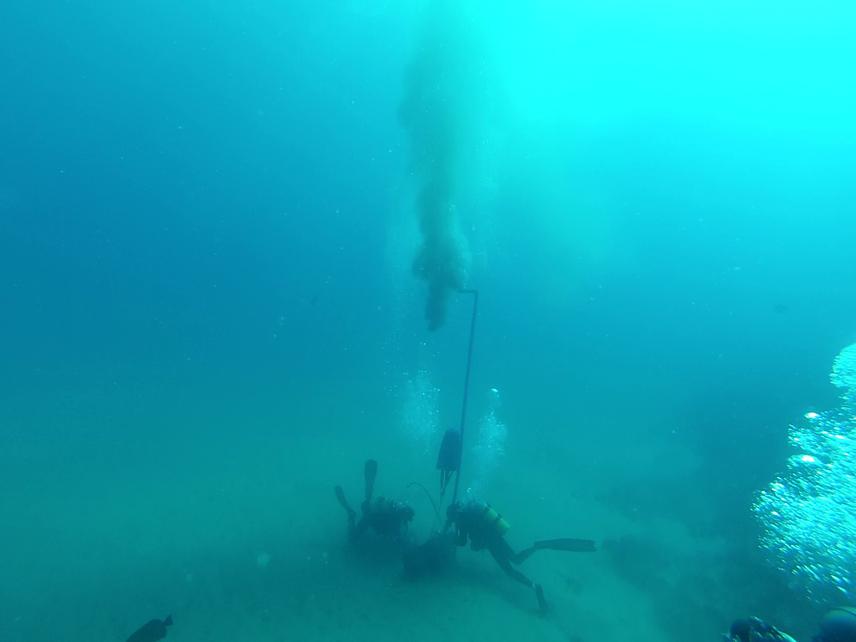Kendyl Le Roux
The aims of this project is to 1) Identify and map the macrobenthic diversity within the iSimangaliso Wetlands Park for the improvement of Marine Protected Area zonation planning and to 2) Identify and determine the extent of ecosystem linkages that occur between the macrobenthos and adjacent environments including: coral reefs, rocky reefs and the estuary.

Suction sampler.
The marine biodiversity of South Africa has not been adequately described, which is particularly evident in softbottom, subtidal communities. This is of concern, as 70% of the seafloor comprises of soft sediments, thus representing the largest faunal coverage in terms of area. The macrobenthos performs numerous functions including the remineralisation of nutrients and secondary production.
Sodwana Bay and in particular 2mile reef lie within the iSimangaliso Wetlands Park comprise an extensive Marine Protected Area (MPA) encompassing estuaries, wetlands, coastal and offshore environments as well as coral reefs from south of St Lucia Estuary to the Mozambican Boarder. Research on coral reefs in terms of ecosystem functions as well as zonation mapping has previously been undertaken; however the same is not true for the adjacent soft benthic environments bordering the coral reefs. Furthermore very little data exist exploring the connectivity of the soft bottom environment to adjacent habitats such as coral reefs and their reliance on one another. The lack of understanding of this connectivity may result in inadequate protection of these linkages thus affecting the health and resilience of the coral reef as well as their surrounding sedimentary habitats.